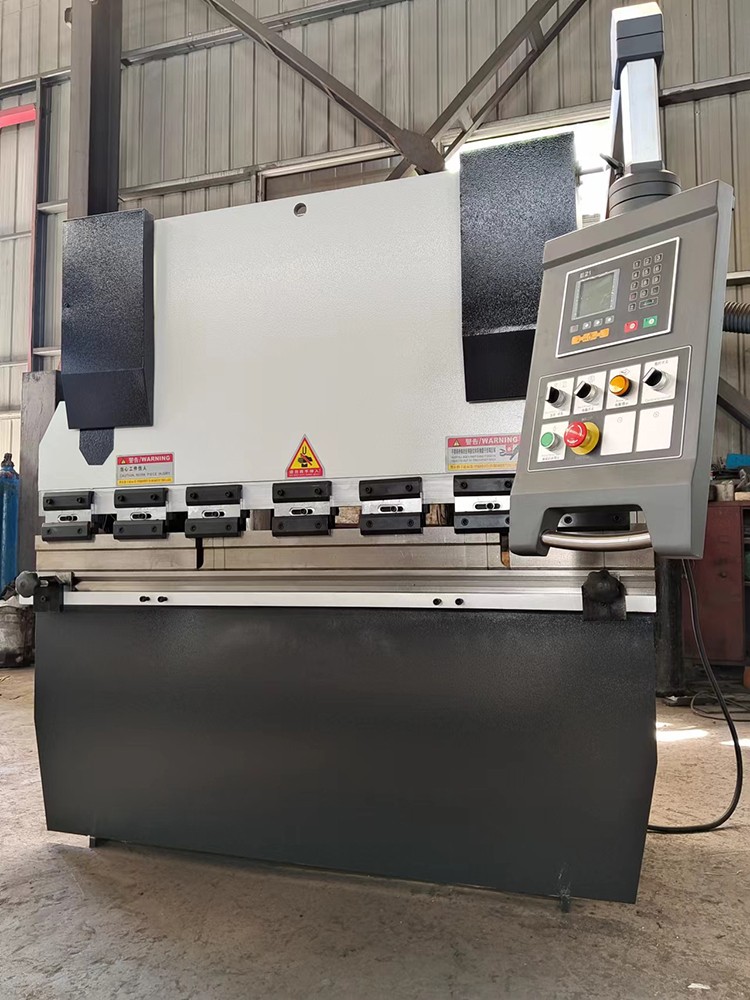

We are a professional bending machine manufacturer with over 10 years of industry experience. Today, we would like to introduce to you the causes and control methods of springback phenomenon of bending machine:

In the process of metal plate bending, the rebound phenomenon is one of the main factors affecting the processing accuracy. Rebound refers to the material in the bending force is withdrawn, the bending angle of the phenomenon of partial recovery. This phenomenon is common in all kinds of metal materials in the bending process, directly affecting the dimensional accuracy of the product and assembly performance. Understanding the causes of springback phenomenon and mastering effective control methods is of great significance to improve the quality of bending process.
1, The basic principle of rebound phenomenon
Rebound phenomenon is essentially the performance of the material elastic deformation recovery. Metal materials in the bending process at the same time elastic deformation and plastic deformation, when the external force is removed, the elastic deformation partially restored, resulting in a reduction in the bending angle. The amount of rebound depends on the material's modulus of elasticity, yield strength and bending process parameters. There are significant differences in the springback characteristics of different materials, e.g. the springback of aluminum alloys is usually greater than that of stainless steel.
2, Analysis of main influencing factors
Material properties are intrinsic factors that determine the amount of rebound. The higher the yield strength of the material, the smaller the modulus of elasticity, the more obvious rebound phenomenon. Plate thickness also has an important impact on the rebound, the rebound of thinner plates is usually greater than that of thicker plates. In terms of bending process parameters, the bending angle, the size of the lower mold opening and the bending speed all affect the degree of springback. Larger bending angles and wider lower die openings increase the amount of springback, while appropriate bending speeds help reduce springback.
3, Basic method of springback control
Mold compensation is the most commonly used rebound control method. By increasing the bending angle in advance, to compensate for the expected amount of rebound. The specific compensation value needs to be determined by the test according to the type and thickness of the material. For high-precision requirements of the parts, you can use multi-channel bending process, through a number of small angle bending gradually reach the target angle, this method can effectively reduce the springback.
4, Process parameter optimization
Reasonable setting of bending process parameters can significantly improve the springback problem. Appropriate reduction in the size of the lower mold opening can increase the proportion of plastic deformation of the material, thereby reducing the springback. Adjust the bending speed to a reasonable range, both to ensure productivity, but also to control the springback. For CNC bending machines, angle compensation can be programmed to achieve precise control.
5, Improvement of mold design
Specially designed mold structure helps to control springback. Bending molds with correction function can apply extra pressure to the material during the bending process and reduce the elastic recovery. Segmented molds can provide targeted compensation according to the deformation characteristics of different parts. For complex shaped parts, profiling molds can be used to improve forming accuracy.
6, Material pretreatment methods
Appropriate material pretreatment can change the mechanical properties of the material, thus reducing the rebound. For some materials, the yield strength can be reduced by annealing. Pre-stretching process can make the material to produce a certain amount of plastic deformation, improve the rebound characteristics of the subsequent bending. These methods need to be selected for use according to specific material properties.
7, Equipment selection and adjustment
Equipment performance is critical to rebound control. High-precision CNC bending machine can achieve more accurate angle control and compensation. The rigidity of the equipment directly affects the bending stability, and the lack of rigidity will exacerbate the rebound phenomenon. Regular calibration of equipment accuracy, to maintain a stable hydraulic system pressure, are important measures to reduce the rebound.
8, Detection and correction
Real-time detection and timely correction is an effective means of controlling rebound. Online angle measurement system can monitor the bending angle changes in real time, providing a basis for process adjustment. For mass production, a first-piece inspection system should be established to adjust process parameters according to the measured results. Statistical process control methods can help analyze the law of rebound and optimize the production process.
Rebound phenomenon is an unavoidable process problem in bending processing, but through scientific analysis and reasonable control, its impact can be minimized. The actual production needs to take into account the material properties, process parameters and equipment conditions, to take targeted control measures. With the continuous development of bending technology, new rebound control methods continue to emerge, providing more possibilities for high-precision bending processing. Mastering rebound control technology is of great significance to improve product quality and productivity.
If you are interested in bending machine, please contact us.
 Address:Room 1202, Detaitang Building, No. 118 Huaguang Road, Zhangdian District, Zibo, Shandong
Address:Room 1202, Detaitang Building, No. 118 Huaguang Road, Zhangdian District, Zibo, Shandong WhatsApp:+8615653328535
WhatsApp:+8615653328535 Wechat: +8615965331535
Wechat: +8615965331535  E-mail:zs@sdsmachinery.com
E-mail:zs@sdsmachinery.com